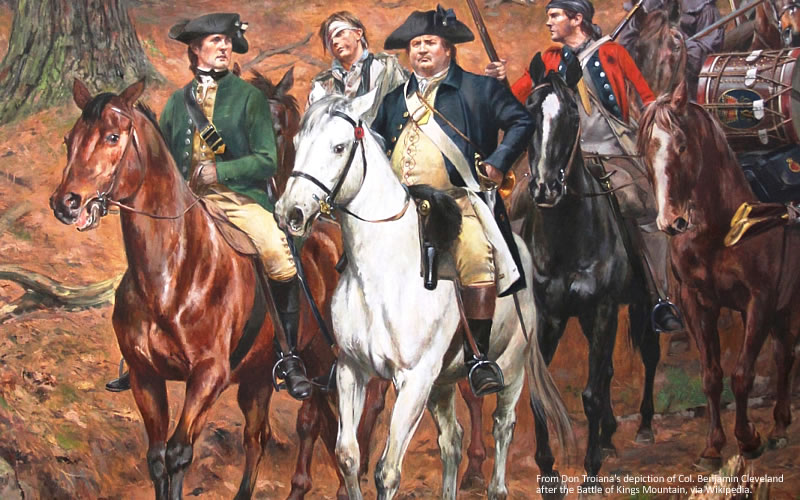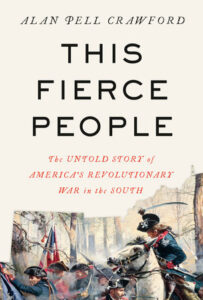
It’s not uncommon for visitors to Charleston to revel in one history when it really might be richer to absorb another.
Too many forget the critical national importance of Charleston and the Carolinas in the colonial effort to become free from Great Britain.
 Instead, they want to tour Fort Sumter and see the cannons in White Point Garden that they think bombarded the fort (nope; those cannons didn’t have the range at the time.)
Instead, they want to tour Fort Sumter and see the cannons in White Point Garden that they think bombarded the fort (nope; those cannons didn’t have the range at the time.)
With this week being full of Revolutionary War history – South Carolina celebrated the war’s first patriot naval victory over the British on June 28’s Carolina Day and the Declaration of Independence on July 4 – it’s the perfect time for a new look at what happened here from 1776 to 1783.
And so enters Virginia historian Alan Pell Crawford whose new book, “This Fierce People: The Untold Story of America’s Revolutionary War in the South,” comes out July 2.
In the 382-page work, he elegantly reminds us of one big thing: Had patriots in the Carolinas not fought in as many battles and pesky skirmishes during that war for independence, the colonists might not have won. In turn that means one thing to all of those tourists who flock in because of the Civil War – it wouldn’t have happened if not for the zeal for liberty by South Carolinians like Christopher Gadsden, Henry Laurens and his son John, Francis Marion, Thomas Sumter and William Moultrie.
Most people, Crawford incisively writes, think of the War for Independence as something that Virginian George Washington waged and won in the Northeast.
 “The problem is that much of the war took place not in the North but in the South, and that is where the most decisive battles – those that forced the British surrender at Yorktown – were fought,” Crawford writes.
“The problem is that much of the war took place not in the North but in the South, and that is where the most decisive battles – those that forced the British surrender at Yorktown – were fought,” Crawford writes.
Key battles were here at Camden, Kings Mountain, Cowpens and Eutaw Springs, just an hour away from Charleston. The British also spent precious time and resources fighting to seize Charleston, the second richest colonial city during the time of the war. All of this stretched supply lines and diverted British attention, often giving Washington’s northern troops time to rest, recover and resupply.
Part of the reason the South’s crucial role in the Revolutionary War has been glossed over may be because of the Civil War and slavery.
“Even in the immediate aftermath of the Civil War, historians were understandably reluctant to honor southerners who contributed so much to the War of Independence, knowing as they did the direct line from [Revolutionary War General] Henry Lee III, for example, to [Civil War General] Robert E. Lee.”
Nevertheless, Crawford’s objective discussion of the South’s role in the Revolutionary War makes for compelling reading. He tells the stories of events through captivating profiles of people like Marion, the hawk-nosed leader who essentially invented guerilla warfare in South Carolina’s swamps. Or the moving and ultimately sad tale of John Laurens, the energetic leader, aide to Washington, buddy of Alexander Hamilton and son of the only man long held during the war in the Tower of London. John Laurens died late in the war – in August 1782 – after an impetuous skirmish with a large British foraging party along the Combahee River about an hour south of Charleston today.
Crawford’s book gets its title from a speech made in 1775 by British statesman and philosopher Edmund Burke, who said of the colonists: “We cannot, I fear, falsify the pedigree of this fierce people, and persuade them that they are not sprung from a nation in whose veins the blood of freedom circulates.”
So this year as you celebrate freedom, watch fireworks and think about what’s happening to this country 248 years later, recall the passion of colonists who risked their lives for an ideal – independence from a king – so they could become a government of the people, by the people and for the people.
Andy Brack is editor and publisher of the Charleston City Paper and Statehouse Report. Crawford’s book is available for pre-order online until July 2, when it will be in bookstores. Have a comment? Send to: feedback@statehousereport.com.



Pingback: New book dives into S.C.’s role in Revolutionary War – Statehouse Report
Review another book & find more angles: John Oller, “The Swamp Fox: How Francis Marion Saved the Revolution,” 2016